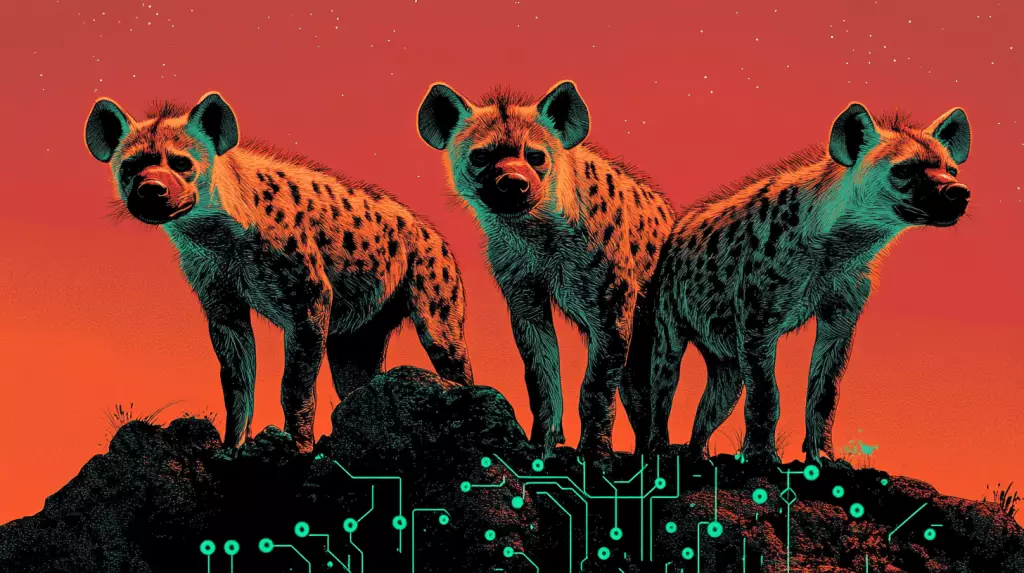The dawn of the AI age has largely been defined by the Transformer architecture, which has dominated the landscape of large language models (LLMs). While giants like OpenAI’s GPT series and Google’s Gemini have set the benchmark for performance, Boston-based startup Liquid AI is boldly venturing into uncharted territories with its newly announced Hyena Edge model. This major development reflects a desire to transcend conventional methods by introducing a viable alternative to Transformers, particularly for mobile and edge applications. As the tech world eagerly anticipates innovations at events like the International Conference on Learning Representations (ICLR) 2025, Liquid AI’s initiative could serve as a catalyst for a paradigm shift in the domain of model architectures.
Hyena Edge: Designed for Efficiency
Liquid AI’s Hyena Edge is not just another incremental improvement; it represents a comprehensive rethinking of how models can be constructed to meet the unique challenges of mobile-device deployment. By utilizing gated convolutions to replace two-thirds of traditional grouped-query attention operators, Hyena Edge promises significant enhancements in performance metrics that are crucial for smartphone applications. During rigorous testing on the Samsung Galaxy S24 Ultra, Hyena Edge showcased impressive performance with lower latency and a smaller memory footprint compared to its Transformer++ counterpart. This rigorous comparison underscores the viability of the new model as not merely an experiment, but a credible solution ready for real-world applications.
The implications of these improvements cannot be overstated. Users increasingly demand quicker, more efficient applications without compromising performance. Whether it’s using an AI for real-time translations during travel or accessing sophisticated virtual assistants, the efficacy of Hyena Edge can potentially redefine user expectations across countless applications.
STAR: Engineering the Future
Behind the development of Hyena Edge lies Liquid AI’s innovative Synthesis of Tailored Architectures (STAR) framework, which deploys evolutionary algorithms to enhance model design. This system empowers researchers to explore a vast array of operator configurations that are mathematically rooted in linear input-varying systems. By optimizing for distinct hardware-related objectives—such as latency and memory usage—STAR processes thousands of permutations, illuminating paths to efficient AI that can seamlessly operate across varying platforms.
As technology advances, the need for dynamic adaptation in AI models has never been more critical. STAR’s foundational principles allow for a model that not only responds to hardware limitations but anticipates them, making it a revolutionary step for developers and engineers racing to create impactful on-device solutions.
Real-World Impact: Performance Metrics
Liquid AI has backed its claims with empirical data drawn from extensive testing against standard benchmarks like Wikitext, Lambada, and PiQA. The outcomes reveal that Hyena Edge does not sacrifice predictive quality for efficiency, a common pitfall for lesser models designed for edge applications. The model matches or even exceeds key benchmarks, reporting improved perplexity scores and accuracy, while also demonstrating lower RAM usage—a clear indicator of its adeptness in resource-constrained environments.
Such performance metrics are more than just numbers; they signify a paradigm shift where mobile devices can handle sophisticated AI tasks previously reserved for heavyweight server protocols. As developers lean toward user-centric designs, Hyena Edge sets a new standard, raising the bar for what is achievable on portable devices.
Shining a Light on Development
A recent video walkthrough detailing Hyena Edge’s development offers a rare glimpse into its intricate architecture. This behind-the-scenes look highlights the transformative journey of the model and how various architectural choices evolved over successive iterations. Visualizing these adaptations illuminates not only the technicalities of Hyena Edge but also its philosophical commitment to enhancing AI reliability and accessibility.
The exploration of different operator types and their gradual optimization provides invaluable insights into the design principles that define its performance. It reveals that innovation in AI is not just a matter of enhancing speed but intelligently sculpting model architecture to fulfill specific roles effectively.
The Road Ahead: An Open Future
Liquid AI’s commitment to open-sourcing its foundation models, including Hyena Edge, indicates a focused vision for democratizing AI technology. This strategy aims to share sophisticated AI that thrives not only in data centers but can also ascend to individual edge devices, fostering a more widespread adoption of intelligent systems.
By challenging the status quo of Transformer reliance, Liquid AI has the potential to reignite a broader conversation about the versatility of model architectures. In a future where mobile devices are bound to take on increasingly complex tasks, Liquid AI’s breakthroughs could serve as a powerful catalyst, redefining the limits of what edge AI can achieve. It stands as a clarion call to industries and researchers alike to pursue multi-faceted approaches, spurring further innovation in this rapidly evolving field.


Leave a Reply